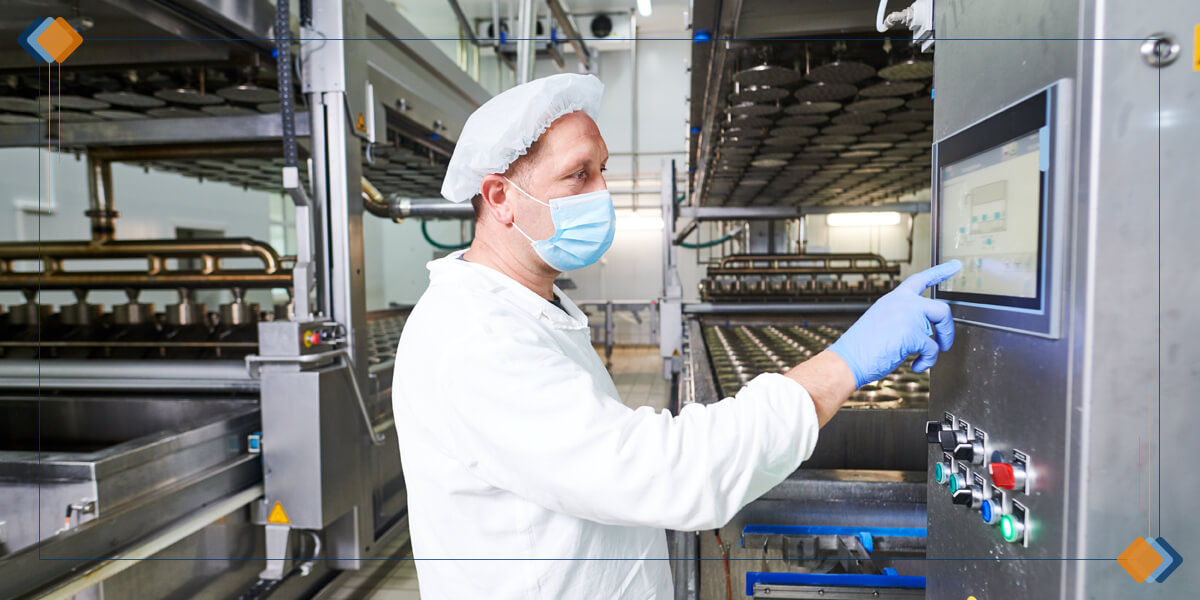
With competition so high and profit margins so narrow in the food industry, food manufacturers are constantly searching for ways to gain a competitive advantage. Overall equipment effectiveness has been around the food industry for many years, with common acceptance that reducing or eliminating downtime is one of the most effective ways for improving OEE performance. Here are five proven tips for reducing downtime and improving OEE performance in the food manufacturing industry.
Improving OEE Performance in the Food Industry
OEE is a measurement of your overall manufacturing processes and equipment effectiveness, taking production time availability, production throughput, and product quality into consideration to calculate an OEE performance score.
The second factor – production throughput – is heavily affected by downtime. If your manufacturing processes stop during available production time, your OEE performance score decreases.
Luckily, many major downtime causes are easily trackable and – by introducing some systematic changes to your production processes – can be significantly reduced if not altogether eliminated.
Here are five tips for reducing downtime and improving OEE performance in the food industry:
- Optimize Your Production Schedule – When you finish one production run and stop your lines to set up for the next run, you’re incurring downtime. Where possible, streamline your production schedule so that similar products are produced one after another. A couple of ways to do this would be to produce fewer but larger batches of the same product (if you have the storage space and can do so while effectively fulfilling sales orders) and running consecutive batches of the same product type but with different packaging configurations.
- Stage Product Changeover Supplies – Every minute of production downtime counts when improving OEE performance. Waiting for the right packaging film or box stock to be retrieved from storage or a different label stock to be loaded into the label printer can dent your OEE performance. Implementing procedures to ensure all the supplies needed to minimize product changeover times are present before product changeover starts can save precious minutes and help push your OEE performance in the right direction. In terms of label stock changeout, whether you’re running a different product with a different sized label or simply reloading the same stock during the same production run, having a second printer at the ready and being able to quickly switch back and forth will potentially save you a few minutes of downtime each time, many times each day.
- Use Preventative Maintenance to Reduce Equipment Downtime – Production downtime due to equipment failure is a regrettable but normal part of life in a food manufacturing facility. However, there are things you can do to minimize the frequency and duration of this type of downtime. Implementing a preventative maintenance program can help circumvent equipment failure before it happens. Nobody really knows when the next machine failure is going to happen, but tracking machine performance, load time, throughput, age, and other factors can help predict when it is most likely to happen. Your maintenance team can plan preventative maintenance during sanitation or other planned downtime to help reduce or eliminate unplanned equipment downtime, thereby improving OEE performance.
- Invest in Automation – Many food manufacturers rely on large amounts of human capital within their food manufacturing operations. Workers are notoriously inconsistent in showing up for work, working at a steady pace, and doing their jobs properly. Workers can also be the bottleneck in processes. Investing in the right types of automation to alleviate those bottlenecks and to ensure a more consistent production flow can help improve your OEE performance.
- Micro Downtime Tracking – Larger periods of downtime are easier to track: if a machine fails, there’s a product changeover or a quality issue, the line lead, department lead and plant manager all likely know when the line was down and what the cause was. But what about much smaller and less noted periods of downtime? While individually small, they can add up to significant downtime and have a serious impact on your OEE. Use your production reporting & analytics to look for gaps in production throughput. For example: on your case labeling lines, look for consecutive case labeling transactions more than five minutes apart. Find out how many occurrences there were and follow up with your production leads to see if there’s a recurring reason. If you can isolate and address the cause you could have a significant impact on reducing downtime and improving OEE performance. Repeat this process for incrementally smaller downtime windows to make on-going OEE improvements.
Isolating and reducing downtime using one or more of the proven tips above can help with improving OEE performance in the food industry. With the right mix of technology, a reliable MES solution and real-time production metrics and analytics, you can win the battle against costly downtime.
If you’re looking for ways for reducing downtime and improving OEE performance, we can help! With more than 40 years serving the food industry and a purpose-built MES solution, we have the knowledge and expertise to help you with improving your OEE performance. Contact us today and let’s chat or set up a demo to see our food industry MES software in action!